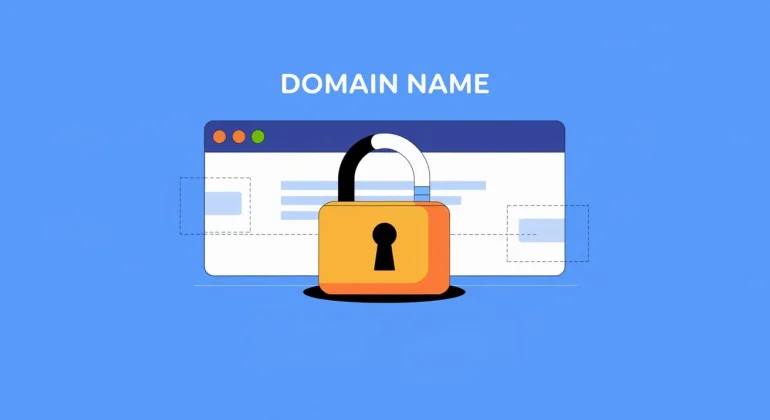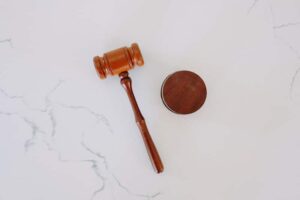How to protect a domain name?
In today’s digital landscape, having a strong online presence is essential for virtually every business.
The domain name is not just a technical address but rather a strategic asset and the first impression many customers get when interacting with your brand on the internet. Losing control over your domain name or failing to protect it adequately can lead to severe consequences such as lost traffic, reputational harm, or even costly legal disputes.
In this extensive guide (up to 10,000 words), we will explore all facets of domain name protection – from the relevant legal framework (covering aspects like unfair competition and trademark infringement) to practical strategies for ensuring a proactive defense (monitoring, recovering expired domains, multiple TLD registrations, etc.) and handling complex issues (UDRP, Syreli, conflicts with prior or subsequent trademarks).
Specifically, we’ll cover:
- Why protecting a domain name is crucial;
- Relevant legal and regulatory bases (such as article L.45 of the CPCE for .fr domains in France, the Intellectual Property Code, etc.);
- The differences between a domain name vs. an earlier or later trademark;
- Best practices for securing and monitoring your digital portfolio;
- The role of unfair competition and trademark infringement actions to enforce your rights;
- Recovering an expired or third-party-held domain name through auctions, backorders, or legal proceedings;
- A thorough FAQ addressing key questions (e.g., “How do I prove domain name ownership?” “What are the three components of a domain name?”).
We’ll reinforce everything with practical examples and statistics (such as the number of disputes handled through the UDRP, average resolution times, etc.). Finally, we’ll illustrate how a specialized firm like Dreyfus can help ensure robust and lasting protection of your online presence.
1. Why Is Domain Name Protection So Critical?
In a highly competitive digital world, your domain name represents the core of your brand’s online footprint. It serves as a unique identifier for search engines and internet users. Losing control of your domain name can result in:
- Loss of visibility: If a third party registers a confusingly similar name, it can siphon off your web traffic or create consumer confusion.
- Reputational damage: A cybersquatter might host malicious or defamatory content under a domain that people associate with your brand.
- Exorbitant costs: Legal or extrajudicial recoveries can be lengthy and expensive, with no guaranteed outcome.
- Risk of legal sanction: If you accidentally infringe on someone else’s earlier trademark by using a conflicting domain, you could face a lawsuit and potential liability.
According to a Verisign study, there were about 350 million registered domain names globally (across all TLDs) by the end of 2022. Every day, over 100,000 new domains are created, while thousands expire or change registrants. In this dynamic environment, vigilance is paramount.
2. Legal Framework and Key Regulations
2.1. Article L.45 of the CPCE
In France, Article L.45 of the Code des postes et des communications électroniques (CPCE), accessible on Legifrance, grants AFNIC authority over national extensions (.fr, .re, etc.). Its guiding principles include:
- Compliance with public order;
- Non-infringement of third-party rights (trademarks, corporate names, etc.);
- Transparency and non-discrimination in domain allocation;
- An option for alternative dispute resolution methods (Syreli, PARL Expert) in case of conflict.
2.2. Intellectual Property Code (CPI)
The Intellectual Property Code (CPI) applies when a domain name conflicts with a prior IP right, such as a trademark. Articles L.713-2 and L.713-3 address trademark infringement, including unauthorized use of a distinctive sign that is confusingly similar or identical to an existing trademark. A domain name can be a “distinctive sign,” so using it without permission to market similar goods/services can constitute infringement if confusion is likely.
2.3. Article 1240 of the French Civil Code (ex 1382)
When you do not have a registered trademark, you may still sue an imitator under unfair competition principles (based on Article 1240 of the Civil Code). This requires showing a fault (imitation, confusion, parasitism) plus damage and a causal link. This approach is commonly used if two domains in the same business sector cause confusion or if one party is free-riding on another’s reputation.
3. Domain Name vs. Trademark: Earlier or Later Rights
DOMAIN NAME VS. EARLIER TRADEMARK
If there is an earlier trademark (valid and registered) and you register a domain name that is identical or highly similar for related goods/services, you risk trademark infringement. Courts worldwide consistently condemn domain owners who hijack a brand’s recognition or create confusion with an established mark.
DOMAIN NAME VS. LATER TRADEMARK
Conversely, if you have been actively using a domain name for years (even without a trademark registration), and someone else later decides to file a trademark that is identical or closely similar to your domain name, you can sometimes rely on your prior usage to challenge or invalidate that later trademark. You must demonstrate substantial and continuous usage, e.g., website archives, commercial documents, etc.
4. Key Steps to Protect and Secure Your Domain Name
4.1. Prior Checks and Searches
Before registering a domain name, it’s essential to perform:
- A WHOIS lookup to confirm availability and identify any existing owner;
- A review of trademark databases (e.g., INPI for France, EUIPO for the EU, WIPO internationally) to avoid conflicts;
- A check of commercial registers (e.g., Infogreffe in France) for similar corporate names.
This preliminary step reduces the risk of inadvertently infringing earlier rights.
4.2. Choosing the Right TLD
The .fr extension is pivotal in France, while .com remains a global favorite. New TLDs (nTLDs) like .tech, .shop, or .city can refine your branding strategy but be aware of cybersquatting if they aren’t also protected.
4.3. Technical and Administrative Security
Many disputes stem from negligence such as forgetting to renew a domain. We strongly recommend automatic renewal with your registrar and enabling registry lock or transfer lock. Limit domain management to trustworthy personnel so an employee can’t transfer ownership to their personal name or a competitor.
4.4. Registering a Trademark if Necessary
If your domain name is a crucial branding element, registering it as a trademark with the INPI (France) or under the Madrid system (international) significantly enhances protection. In any potential dispute, you can pursue a trademark infringement action rather than relying solely on unfair competition.
5. Unfair Competition Actions
Unfair competition is based on civil liability rules (cf. Article 1240 of the French Civil Code, formerly Article 1382). It’s particularly relevant when you don’t have a trademark registration, or the mark’s scope doesn’t fully apply to the domain conflict.
5.1. Elements to Prove
- Fault: e.g., imitation, creating confusion, or parasitism of your brand or domain;
- Damage: lost customers, reputational harm, or traffic diversion;
- Causation: the defendant’s conduct is the direct cause of the harm.
5.2. Illustrative Ruling
Paris High Court (TGI), January 10, 2017 (RG No. 15/07963):
The company operating exemple-luxe.com sued exempledeluxe.fr for unfair competition, alleging that the domain caused confusion among consumers. The court sided with the plaintiff, ordering the defendant to cease using the infringing domain and pay damages.
5.3. Advantages and Drawbacks
Unfair competition is flexible and doesn’t require showing a registered IP title like a trademark. However, proving actual harm (loss, confusion) can sometimes be more demanding than trademark infringement, which relies on the existence of a valid earlier mark to demonstrate a direct violation.
6. Trademark Infringement Actions
If you hold an earlier registered trademark, a trademark infringement lawsuit often provides a stronger remedy than unfair competition. You would invoke Articles L.713-2 and L.713-3 of the French IP Code. Infringement requires you to prove:
- A valid prior trademark;
- Unauthorized use of an identical or confusingly similar sign;
- A likelihood of confusion among the relevant public or (for famous marks) a risk of diluting the mark’s distinctiveness.
6.1. Proving Mark Existence
You need to show that your trademark is duly registered and not subject to invalidation or non-use cancellation. If the defendant challenges the trademark (arguing you haven’t used it for over five years, for instance), you may have to demonstrate genuine use to maintain your rights.
6.2. Example Ruling
Paris Court of Appeal, March 2, 2020 (RG No. 18/26345):
The domain marqueXYZ-online.com infringed the earlier trademark “MARQUEXYZ,” as it created a likelihood of confusion. The court ordered transfer of the domain and awarded damages to the trademark owner.
6.3. Scope of Application
Trademark infringement typically applies to commercial use of the domain name. If the domain is used non-commercially or in a completely different industry, confusion may be harder to establish. But for well-known (famous) marks, protection can extend to dissimilar goods/services if there is risk of tarnishment or dilution.
7. Why Monitor Your Domain Names?
Proactive monitoring of your domain(s) (or an entire domain portfolio) involves setting up alerts or scanning systems to foresee or detect:
- Impending expiration: so you can renew in time and avoid losing the domain to a third party;
- Cybersquatting: unscrupulous individuals may register near-identical domains (typosquatting, brandjacking);
- Brand abuse: if new domains incorporate your brand or a misleading segment thereof;
- Excessive resale prices: squatters may try to extort large sums if you let your domain lapse or if you need to buy it back quickly.
7.1. Services and Tools
Many registrars provide a “watch service” or specialized monitoring solutions.
You can also implement custom scripts or sign up for WHOIS alerts.
The AFNIC (the .fr registry) offers additional monitoring tools for .fr extension domains.
7.2. Recommended Practices
As part of a global strategy, consider:
- Centralized management: using a single or limited set of registrars to keep track of all your domains.
- Documentation: maintaining an up-to-date record (spreadsheet or dedicated software) of each domain’s expiration date, contact info, and relevant legal notes.
- Team training: ensuring your legal department and IT staff coordinate domain naming, renewals, and brand protection effectively.
8. Recovering an Expired or Third-Party Domain Name
Losing a domain name due to non-renewal or seeing it snatched by a malicious party can be challenging, but not always irreversible. Let’s explore the different methods to recover your domain name and how to keep it safe thereafter.
What Is Domain Recovery?
Domain recovery refers to the process of regaining or reacquiring a domain name that was previously held by someone else or had expired and returned to the public pool. Recovery can take the form of:
- Amiable negotiations: contacting the current registrant to purchase the domain directly;
- Auctions or backorder platforms: capturing domains in redemption phase or pending delete, often competing with other potential buyers;
- Extrajudicial proceedings (UDRP, Syreli) if the domain is used in bad faith and violates your rights;
- Judicial actions for unfair competition or infringement, if the domain is maliciously exploiting your brand or trade name.
Practical Steps to Recover an Expired Domain
- Identify the domain’s current phase:
- Grace period: the original owner may still renew;
- Redemption period: domain is suspended but not publicly available;
- Pending delete: domain is set to be released soon;
- Released or auction phase: domain re-enters open registration or is up for bidding.
- Select your approach:
- Backorder via specialized platforms like SnapNames, Dropcatch, etc.;
- Participate in any auction if the registrar holds a bidding process;
- Register the domain directly if it’s fully released to the public.
- Finalize acquisition:
- Once recovered, set up DNS, verify WHOIS listing you as the registrant;
- Enable auto-renew and domain lock to prevent losing it again.
How to Determine if a Domain Is Available for Recovery?
You can use dedicated tracking services such as Nom-domaine.fr or Domain Tools to check a domain’s actual status (active, redemption, pending delete). Some backorder services provide real-time status and will notify you once the domain is open for new registration or is in an auction phase.
In general, the domain is “available” if it is fully dropped and no longer in a grace or redemption period.
Note that popular or high-value domains can attract multiple bidders the moment they drop, so speed is essential to secure them.
9. Handling Disputes (UDRP, Syreli, Arbitration, Courts)
When a conflict arises — e.g., you believe someone else’s domain infringes your brand, or you’re accused of infringing a prior right — you have several options:
- Extrajudicial proceedings:
- UDRP (Uniform Domain-Name Dispute-Resolution Policy): for gTLDs like .com, .net, .org. Typically handled by ICANN-approved dispute centers such as WIPO.
Duration: about 2–3 months.
Outcome: transfer or cancellation of the domain if bad faith, no legitimate interest, and confusing similarity are proven.
- Syreli or PARL Expert with AFNIC for .fr.
Decisions often within a few weeks to a few months.
Remedy: domain transfer or deletion if the domain violates L.45 CPCE or third-party rights.
- UDRP (Uniform Domain-Name Dispute-Resolution Policy): for gTLDs like .com, .net, .org. Typically handled by ICANN-approved dispute centers such as WIPO.
- Judicial options:
- Unfair competition (Civil Code, art. 1240), if no trademark but confusion or parasitism is established;
- Trademark infringement (CPI L.713-2, L.713-3), if you hold an earlier trademark;
- Arbitration if a contract or prior agreement stipulates it.
According to WIPO, about 65–70% of UDRP cases result in the complainant’s favor, often leading to domain transfer. Meanwhile, AFNIC indicates that “several hundred” Syreli or PARL Expert cases occur each year for .fr, with the majority concluding in transfer or cancellation where the domain clearly infringes a prior right or is used in bad faith.
10. Some Statistics and Trends
For a broader view of the phenomenon, here are a few data points:
- Globally, about 350 million domains were registered across all TLDs by the end of 2022 (source: Verisign).
- An estimated 3–5% of these are so-called “speculative” registrations, often used for parking, reselling, or cybersquatting (figures vary by TLD).
- WIPO handled 5,500–6,000 UDRP domain disputes in 2022, reflecting a continuous rise year over year.
- In the .fr space, “several hundred” Syreli/PARL Expert complaints are filed annually, mostly due to brand or trade name conflicts.
This highlights a strong momentum: disputes are increasing as digitalization expands, making anticipation and prevention the best ways to mitigate risk.
11. Comprehensive FAQ
How Do I Prove Ownership of a Domain Name?
Typically, you check the WHOIS record. The official registrant is shown there (often under “Registrant” or “Owner”). If you appear as the registrant, that is legal proof of ownership. Additionally, keep invoices, emails with your registrar, and historical screenshots to strengthen evidence in case of dispute.
How Do I Protect a Domain Name During a Conflict?
Depending on the context:
- UDRP or Syreli extrajudicial proceedings: if you show the domain was registered in bad faith and lacks legitimate interest by the respondent, it can be transferred to you.
- Trademark infringement action: if you own a prior mark. Courts may order cessation of use, domain transfer, and damages.
- Unfair competition: to show confusion or parasitism under civil liability rules.
- Amiable negotiation: sometimes buying the domain from its current holder is the fastest solution.
What Is the Validity Condition for a Domain Name?
From a technical standpoint, the domain must meet syntax and length rules. Legally, it must not violate public policy or others’ prior rights (Article L.45 CPCE). AFNIC can revoke or transfer a .fr if those conditions are breached.
What Are the 3 Components of a Domain Name?
Typically, a domain name is structured as follows:
- Subdomain (e.g., “www” or any other custom subdomain)
- The second-level name (e.g., “example”)
- The TLD (e.g., “.fr,” “.com,” “.net”)
So “www.example.fr” is divided into “www” (subdomain), “example” (root), and “.fr” (extension).
What Happens If I Don’t Monitor My Domain Name?
Without regular monitoring, you could:
- Accidentally let it expire and lose it to a competitor or cybersquatter;
- Remain unaware of near-identical domain registrations (typosquatting, brandjacking);
- Face stolen traffic or reputational harm;
- Pay exorbitant fees if forced to buy it back or engage in litigation.
How Do I Know If a Domain Name Is Expired or About to Expire?
Check the WHOIS record for the domain’s expiration date. Certain services (like ExpiredDomains.net) list domains nearing expiration or in redemption. Also, many registrars provide reminders or notifications for upcoming renewals.
How Long Does a UDRP Case Typically Last?
On average, 2–3 months. WIPO (the World Intellectual Property Organization) handles most disputes. The panel reviews the complainant’s and the respondent’s statements. Where the complainant proves bad faith and no legitimate interest, the panel typically orders transfer or cancellation of the domain.
How Many Cases Does WIPO Handle Each Year?
WIPO deals with 5,500–6,000 domain disputes annually under the UDRP. This figure has been steadily increasing, reflecting the expansion of digital commerce and domain speculation.
What If My .fr Domain Is Being Used by Someone Else?
You can:
- File a complaint under Syreli (handled by AFNIC) or PARL Expert for a quick extrajudicial resolution.
- Consider a court action based on unfair competition or infringement if a trademark is involved.
Procedures typically evaluate whether the domain violates L.45 CPCE or prior rights. If so, they can order a transfer or deletion.
12. Conclusion and Contact
This guide has taken you through the **complex realm** of domain name protection and recovery, covering:
- Legal frameworks in France (CPCE, IP Code) and relevant guidelines for TLDs;
- Practical strategies (monitoring, locks, multiple TLD coverage) to stay proactive;
- Legal actions (unfair competition, trademark infringement), along with extrajudicial options (UDRP, Syreli);
- Domain recovery (through auctions, backorder services, or negotiations) when a domain expires or is held by a third party;
- Statistics illustrating how domain disputes keep rising globally.
The key is a proactive approach: verifying availability, implementing robust security measures, and staying alert via monitoring. Engaging a specialized law firm can be invaluable for drafting an effective UDRP complaint, managing a Syreli dispute, litigating in court, or generally structuring your online portfolio’s legal defenses.
Looking for customized support?
Contact Dreyfus now to safeguard your domain names effectively.
Our team provides deep expertise in domain name law, trademark law, and IP strategy, ensuring your digital assets are fully protected and your rights enforced.











 On the 16th of May 2022, the Council of State (Conseil d’Etat) handed down a decision in its 7th and 2nd chambers following the appeal lodged by the company ‘Culturespaces’ regarding the interim order issued on December 13th, 2021, by the Nîmes Administrative Court.
On the 16th of May 2022, the Council of State (Conseil d’Etat) handed down a decision in its 7th and 2nd chambers following the appeal lodged by the company ‘Culturespaces’ regarding the interim order issued on December 13th, 2021, by the Nîmes Administrative Court.


 On February 18, 2021, ICANN’s Generic Name Support Organization (gNSO) Board voted to approve the “
On February 18, 2021, ICANN’s Generic Name Support Organization (gNSO) Board voted to approve the “